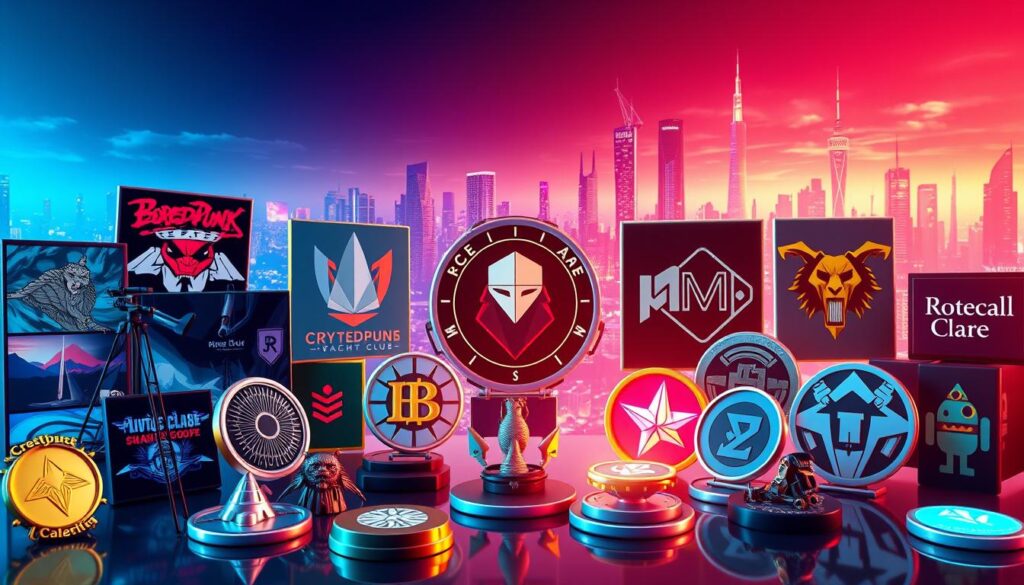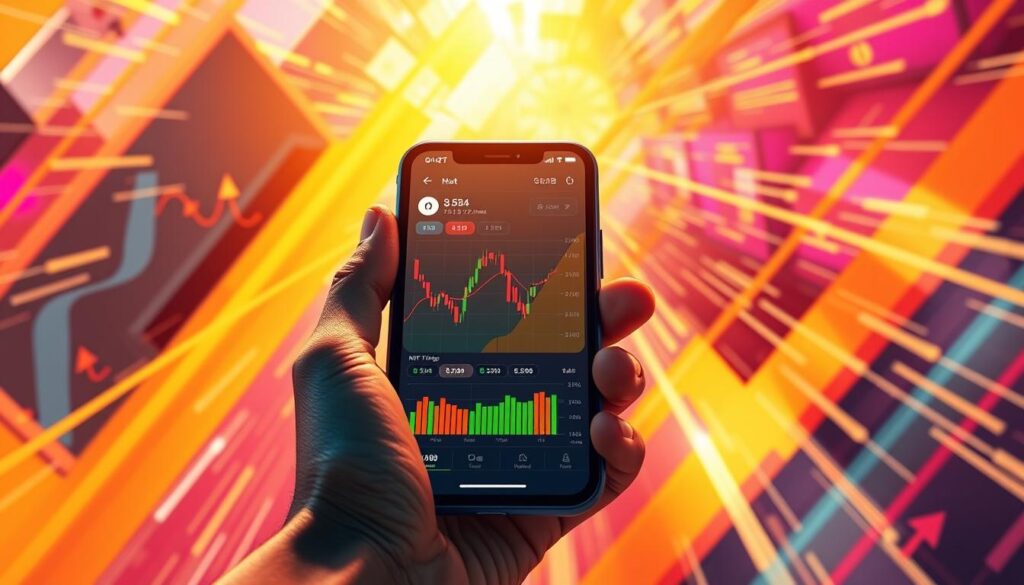Now Reading: The Ultimate NFT Marketplace Comparison Guide
- 01
The Ultimate NFT Marketplace Comparison Guide
The Ultimate NFT Marketplace Comparison Guide
The digital collectibles space has exploded since 2017, with over 80 platforms now competing for attention. Choosing where to buy or sell unique assets like non-fungible tokens (NFTs) requires understanding each platform’s strengths. From OpenSea’s vast selection to Nifty Gateway’s curated drops, options vary dramatically based on your goals.

Industry projections reveal why this choice matters: the sector is expected to grow from $21.39 billion in 2023 to $212 billion by 2031. Whether you’re an artist showcasing work or a collector hunting rare items, fees, blockchain networks, and audience reach directly impact success. Platforms like Foundation cater specifically to high-end creators, while Axie Marketplace focuses on gaming enthusiasts.
This guide breaks down 11 leading platforms through critical lenses. We analyze transaction costs, royalty systems, and security protocols to simplify decision-making. Discover why some platforms thrive for digital art sales while others dominate in sports memorabilia or virtual land trading.
Key Takeaways
- The digital collectibles market could grow tenfold by 2031, emphasizing platform selection
- Leading options like Rarible and SuperRare serve distinct audiences from casual traders to elite artists
- Fee structures vary significantly, with some platforms charging under 2% and others over 15%
- Blockchain compatibility affects accessibility, with Ethereum dominating but Solana gaining traction
- Specialized platforms like NBA Top Shot outperform generalists for niche collectibles
Introduction to NFT Marketplaces
Ethereum’s blockchain sparked a cultural shift in 2017 by enabling verifiable ownership of digital files. This innovation allowed creators to tokenize everything from pixel art to viral tweets, creating a new economy for unique assets.

A Brief History and Evolution
The concept of digital scarcity gained traction when crypto enthusiasts burned Banksy’s physical artwork “Morons” and sold its tokenized version for $393,000. This 2021 event proved tokenized assets could hold real-world value while existing purely online.
Celebrity involvement accelerated adoption. Musician Grimes earned $5.8 million selling 10 digital pieces, while Paris Hilton’s three-item collection surpassed $1.1 million. These sales demonstrated how blockchain technology could transform creative industries.
Early platforms focused on basic trading. Modern systems now offer royalty automation for artists and multi-chain compatibility. Features like instant previews and mobile-friendly interfaces make digital collectibles accessible to mainstream users.
Today’s platforms cater to diverse groups:
- Artists seeking recurring revenue from secondary sales
- Collectors building portfolios of rare virtual items
- Gamers trading in-game assets across borders
The space now prioritizes security and regulatory compliance, with leading platforms implementing KYC checks and fraud detection systems. This evolution reflects the growing maturity of digital ownership ecosystems.
What is an NFT Marketplace?
Specialized hubs for unique digital items emerged after 2017, offering creators tools to monetize work through blockchain verification. These spaces blend gallery features with auction-house mechanics, enabling direct exchanges between artists and collectors.

Definition and Key Components
A digital asset platform lets users trade one-of-a-kind tokens representing ownership of files like artwork or music. Built on distributed ledger systems, these hubs verify each item’s uniqueness through permanent blockchain records. Core elements include:
- Secure wallets for storing collectibles
- Listing tools for creators to showcase work
- Bidding systems for competitive pricing
- Multi-cryptocurrency payment options
How These Platforms Function
Artists convert files into tradeable tokens through a process called minting. This involves uploading content and paying network charges. Once listed, items appear in searchable catalogs where buyers can purchase instantly or bid in timed auctions.
Smart contracts automate royalty payments to creators when resales occur. Centralized platforms manage user accounts and disputes, while decentralized versions rely entirely on code-based agreements. All transactions appear publicly on the blockchain, creating transparent ownership histories.
Advanced platforms now offer verification badges for high-profile creators and historical price charts for informed collecting. These features help users navigate markets where a single pixel artwork recently sold for $3.4 million.
In-Depth Look at Top NFT Marketplaces
From multi-chain giants to niche art communities, digital asset platforms vary in focus and functionality. Understanding each service’s strengths helps creators and collectors maximize value while minimizing costs.
Leading Platforms: OpenSea, Rarible, Crypto.com & More
OpenSea remains the industry leader with 80+ million items across 10+ blockchains. Its 2.5% transaction fee appeals to casual traders exploring diverse categories like virtual real estate and music. Rarible empowers creators through governance tokens and 50% royalty options, while Crypto.com simplifies purchases using credit cards and exchange-linked wallets.
Unique Features and Market Differentiators
Specialized platforms carve distinct niches. SuperRare’s curated 32,000-piece collection targets serious art investors, guaranteeing 10% artist royalties on resales. Nifty Gateway dominates entertainment drops with celebrity collaborations, whereas Foundation’s invite-only model ensures premium quality. Binance NFT stands out with 1% fees and staking options backed by crypto liquidity.
Choosing the right platform depends on your goals. High-volume sellers benefit from OpenSea’s reach, while artists seeking recurring income might prefer Rarible’s royalty flexibility. Always compare blockchain compatibility, fee structures, and community engagement before committing.
FAQ
What features define a top platform for digital collectibles?
Leading platforms prioritize user experience, low gas fees, and diverse blockchain support. OpenSea and Rarible stand out for customizable storefronts, while Crypto.com emphasizes curated drops. Key elements include intuitive interfaces, multi-chain compatibility, and tools for creators to manage royalties.
How do fees vary across popular art platforms?
Fees range from 2.5% to 15%, depending on the platform. OpenSea charges 2.5% per sale, while Nifty Gateway applies a 5% fee plus gas costs. Some platforms, like Rarible, allow users to choose between Ethereum and Solana to balance fees and transaction speed.
Why is blockchain choice critical for creators?
Different blockchains offer unique benefits. Ethereum supports complex smart contracts but has higher gas fees. Solana and Polygon enable faster, cheaper transactions, ideal for beginners. Artists should prioritize ecosystems aligned with their audience’s preferences and technical requirements.
What tools help creators launch collections effectively?
Platforms like Foundation provide analytics dashboards and social integration. Minting tools, pre-built templates, and cross-promotion features simplify launching projects. Look for platforms with built-in communities or partnerships, such as SuperRare’s artist grants, to amplify visibility.
How do royalties work for digital art sales?
Most platforms let artists set royalty percentages (typically 5–10%) for secondary sales. Ethereum-based systems automate payments via smart contracts. However, royalties aren’t enforced universally—some blockchains require optional creator earnings, so research platform policies carefully.
What security measures protect collectors?
Reputable platforms use encrypted wallets, two-factor authentication, and audit smart contracts. Crypto.com employs institutional-grade custody, while OpenSea integrates WalletConnect for secure transactions. Always verify contract addresses and avoid off-platform deals to reduce scams.














